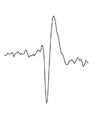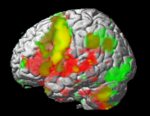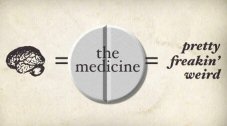Quick links from the past week in mind and brain news:

Bad Science looks at how we can fool ourselves and others using security and detection technology.
Cell Phones Are Somehow Related To The Brain. Thank you Neuroskeptic for a decent look at the ‘mobile phones affect the brain’ story that made the headlines this week.
SoundCheck from WYNC radio had an excellent piece on music and the brain recently with musician and neuroscientist Dan Levitin.
How well can we communicate emotions purely through touch? The BPS Research Digest touches on a wonderful study.
Wired has a podcast about the battles of the upcoming revision to American psychiatry’s DSM diagnostic manual.
An excellent piece on Neuroanthropology covers new research challenging the idea of the recently evolved ‘modern‘ human.
The Guardian has a piece on motivations behind ‘designer vagina’ plastic surgery that starts with a sensationalist headline not supported by the article.
There’s a thoughtful but all-too-spiky response by The Last Psychiatrist to an important Jonah Lehrer article on the scientific ‘decline effect’ published recently in The New Yorker.
Time magazine asks whether the concept of sex addiction is a ‘real disease or a convenient excuse’.
A typically excellent piece on Providentia on Andre Bloch – mathematician in the asylum.
The Washington Post heralds another new movie based on the “drug-influenced, paranoid worldview” of Philip K. Dick.
Is romantic love a cultural illusion? A brilliant Neurocritic piece that examines the concept of love from cultural ideas to brain function.
Time magazine asks whether emergency bans on ‘legal highs’ can hinder legitimate drug development.
Does anger convey competence? asks Barking Up the Wrong Tree. Fortunately for lots of self-important bosses, it seems it does.
The Guardian reports that the UK government’s behavioural economics “Nudge Unit” hasn’t convinced anyone to use its ideas yet.
There’s a beautiful scanning electron close-up of the human cerebral cortex over at Neuro Images.
The New York Times discusses peak fertility in women and a curious new twist to the usual ‘most attractive time of the month’ story.
There’s a genuinely interesting consideration of Twitter and the psychology of private speech over at The Child in Time blog.
 A 2008
A 2008 
 A gripping
A gripping 
 In the debate about the ability of language to adequately describe conscious experience, jazzed-out rappers
In the debate about the ability of language to adequately describe conscious experience, jazzed-out rappers  The illusion that a horse could do maths may be behind sniffer dogs falsely ‘detecting’ illicit substances according to an intriguing study
The illusion that a horse could do maths may be behind sniffer dogs falsely ‘detecting’ illicit substances according to an intriguing study  The Royal Society of Arts has an awesome
The Royal Society of Arts has an awesome 

 My ebook
My ebook  Satirical website Newsbiscuit has a cutting
Satirical website Newsbiscuit has a cutting  Australian science reporter Professor Funk has made a fantastic animated
Australian science reporter Professor Funk has made a fantastic animated  BBC Radio 4’s In Our Time has a wonderful programme on the history of our knowledge about the nervous system which you can listen to streamed from the
BBC Radio 4’s In Our Time has a wonderful programme on the history of our knowledge about the nervous system which you can listen to streamed from the 